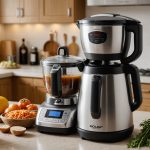Importance of Safe Shellfish Management
Ensuring safe shellfish handling is paramount for maintaining food safety and achieving customer satisfaction. It starts by strictly adhering to safety guidelines. Compliance with these standards is crucial to prevent food-borne illnesses, which can result from improper handling of shellfish. Organizations are obligated by health regulations to enforce these practices, ensuring that public health is prioritized.
Non-compliance can lead to severe consequences, including fines and reputational damage. Businesses embedding safety at the core of their operations not only align with legal standards but build a foundation of trust with their clientele. Customers are more likely to remain loyal to establishments that are committed to safe practices. This trust is vital in an industry where safety and service are intertwined.
Adopting and consistently implementing precise safety guidelines reassures customers that their well-being is a priority. By establishing rigorous standards, the potential for contamination is vastly reduced, instilling confidence in those who consume shellfish. This in turn promotes a cycle of customer satisfaction, as patrons feel secure knowing food safety is not compromised.
Businesses benefit from maintaining high safety standards, fostering long-term relationships and encouraging repeat patronage.
Also to read : Crafting an Inviting Sensory Garden Dining Experience at Your Countryside Bistro: Key Design Elements Revealed
Hygiene Practices for Shellfish Handling
Hygiene practices are essential in preventing contamination and safeguarding public health. Workers must prioritise consistent handwashing as the first line of defence against germs. Proper use of gloves is crucial, altering them between handling different food items to mitigate cross-contamination.
Cross-contamination Prevention
Preventing cross-contact with different foods requires rigorous procedures. This includes maintaining defined zones for raw and cooked shellfish, using separate utensils, and ensuring that any surface touched by shellfish is sanitised immediately. Such measures are vital to uphold hygiene standards.
Employee Training
Thorough employee training in hygiene protocols is integral to shellfish safety. Staff must be educated about the importance of handwashing and the correct use of gloves, as well as recognising signs of spoilage in shellfish. Competent training empowers employees to uphold food safety standards diligently.
- Core practices:
- Reinforce training regularly to refresh staff knowledge.
- Utilise visual aids and reminders about hygiene practices in the workplace.
These steps ensure that hygienic handling practices are not only implemented but also sustained, thereby protecting customers and reinforcing trust in food service establishments. This adherence to hygiene practices ultimately contributes to both food safety and long-term customer satisfaction.
Proper Storage Temperatures for Shellfish
Efficient shellfish storage is essential to maintain food safety and quality. Maintaining the correct temperature is significant. For raw shellfish, the ideal range is 0-4°C (32-39°F), ensuring freshness and reducing spoilage risks. Deviation from this range can precipitate bacterial growth, posing a threat to food safety. Consequently, businesses must prioritise temperature control to comply with food safety standards and prevent contamination.
The repercussions of improper temperature management are considerable. It can lead to food-borne illnesses, costly waste, and legal ramifications due to health regulation violations. Vigilant monitoring and maintaining consistent storage conditions prevent these issues, safeguarding public health and the business’s reputation.
Monitoring techniques are varied and widely accessible. Implementation of digital temperature loggers or smart thermostats offers precision and real-time alerts for any temperature deviations. Regular audits of storage units contribute to high standards, offering peace of mind to businesses and consumers alike.
By consistently adhering to these practices, establishments not only align with food safety guidelines but also cultivate customer trust. Consumers are reassured knowing their meals are stored professionally, reinforcing their confidence in those serving their seafood delicacy.
Sourcing Quality Shellfish
In today’s market, sourcing high-quality shellfish is pivotal. Establishments should prioritise choosing reputable suppliers to ensure the safety and freshness of their products. A reputable supplier will adhere to high standards, enhancing the quality of the shellfish. To achieve this, look for suppliers with verified certifications, such as HACCP or MSC, which confirm compliance with international safety protocols.
Sustainable sourcing has become an essential criteria for procurement. By choosing sustainable options, businesses contribute to environmental preservation and support ethical practices. This involves selecting shellfish that is harvested in a way that does not deplete resources or harm the ecosystem. Understanding and applying these principles helps companies align with market trends and consumer expectations.
Moreover, it’s crucial to verify shellfish safety certifications, ensuring the supplier’s commitment to quality and safety standards. Frequent audits and thorough quality checks are indispensable to maintain the integrity of the supply chain, ultimately fortifying consumer trust. By embedding these procurement practices, businesses can offer top-notch, responsibly sourced shellfish that meets safety benchmarks, upholding their reputation while contributing to a more sustainable future.
Allergen Awareness and Management
Understanding shellfish allergens is crucial in the food service industry for ensuring customer safety. Shellfish are among the most common food allergens, and reactions can range from mild to severe. This necessitates effective allergen management strategies to protect at-risk consumers.
A core strategy for minimizing allergen exposure involves clear labeling of menu items containing shellfish. Labels should be specific and informative, allowing customers to make informed decisions. Furthermore, training kitchen staff to avoid cross-contact during food preparation is paramount. This includes using separate cooking utensils and designating specific areas for shellfish preparation.
Effectively communicating allergen information to customers is also critical. Encourage direct customer inquiries and ensure staff is well-versed in responding accurately. This communication fosters a dining environment where customer safety is prioritized.
Allergen management is an ongoing process. Regularly updating educational materials and conducting refresher courses for staff ensures current knowledge and practices. Such diligence in managing allergens not only enhances food safety but also supports customer confidence and satisfaction. By integrating these strategies into daily operations, establishments can provide a safer dining experience for all patrons, reinforcing their commitment to safety and quality.
Safe Preparation Techniques for Shellfish
Implementing safe preparation techniques is crucial in ensuring shellfish are both delicious and free from contaminants. Proper cleaning and shucking of shellfish not only maintains their quality but also aids in removing potential pathogens. When cleaning, it’s vital to scrub the shells thoroughly under cold running water, eliminating any dirt or debris. This ensures that when you shuck, only clean, fresh shellfish are exposed.
When it comes to cooking methods, boiling, steaming, and grilling are highly recommended. These methods reach high temperatures that can effectively kill bacteria and viruses, safeguarding food safety. Ensuring that the internal temperature of shellfish reaches the recommended level is essential, and using a food thermometer can help verify this.
During preparation, constant temperature checks are indispensable. Raw shellfish should be kept at specific temperatures, while cooked shellfish need to be heated adequately to avoid bacterial growth. This vigilance helps prevent food-borne illnesses and ensures that shellfish are safe for consumption. Incorporating these practices not only secures the shellfish’s safety but also aligns with industry standards, fostering a reliable and trustworthy dining experience.
Local Health Regulations and Compliance
Navigating local health regulations is essential for any food service business. These rules safeguard public health by setting standards for safe food handling. Staying compliant with these local laws prevents legal issues and ensures customer safety. Adhering to these protocols not only satisfies regulatory bodies but also reassures customers, building their trust.
Regulations can vary significantly between locations, necessitating constant awareness and adaptation. Establishments must routinely review updates to these guidelines to remain compliant. Failing to comply can result in severe repercussions, including fines, business closure, or reputational damage.
Fortunately, various tools and resources can assist with tracking and maintaining compliance. Digital platforms, for example, can automate compliance checks and provide alerts about regulatory updates. These tools offer an efficient way to stay informed and ensure ongoing adherence to compliance guidelines.
Regular training sessions and refresher courses for staff can also play a vital role. They ensure that everyone is up-to-date with current regulations and understands their responsibilities. Leveraging these resources and strategies helps businesses uphold high standards, catering to both regulatory demands and customer expectations efficiently. Such diligent efforts in regulation compliance are fundamental to sustaining a reliable and trustworthy operation.
Practical Tips and Checklists
Maintaining efficient shellfish management in food service requires employing effective practical tips and utilizing a comprehensive shellfish management checklist. These tools streamline operations, enhance food service efficiency, and ensure ongoing compliance with safety standards. A well-structured checklist should address key elements of shellfish handling, including storage temperatures, preparation techniques, and cleanliness protocols.
Daily monitoring of storage conditions using reliable temperature controls is crucial, aligning with food safety guidelines. It is equally important to document these checks systematically. Implementing routine temperature logs not only ensures compliance but also facilitates prompt identification of potential safety breaches.
Streamlining management processes can be achieved by integrating efficient scheduling of routine cleaning and maintenance tasks. This includes ensuring all preparation areas and equipment are sanitised to prevent contamination. Regular staff training sessions about safe handling practices are vital, reinforcing consistent adherence to safety standards.
Highly efficient operations depend on maintaining regular inventories and sourcing shellfish from reputable suppliers. Integrating these elements within the checklist establishes a robust framework for safe shellfish management. By focusing on these practical tips, food service establishments can consistently deliver safe, high-quality shellfish, reinforcing customer trust and satisfaction.
FAQs and Common Concerns
When it comes to shellfish safety, patrons and staff alike often have pressing questions. Addressing these frequently asked questions not only informs but also builds confidence in the handling processes. How can one ensure safe shellfish handling? The answer lies in strictly adhering to established food safety guidelines, which include appropriate storage temperatures and rigorous hygiene practices.
Many are concerned about the risks of cross-contamination. Proper separation of raw and cooked shellfish combined with regular sanitisation of surfaces eliminates this concern. What about managing shellfish allergens? Effective allergen management strategies, such as clear labeling and dedicated preparation areas, are vital to protect those with allergies.
Restaurant staff might wonder how to keep up with ever-evolving health regulations. Investing in continuous employee training, using digital resources for compliance, and conducting regular audits are crucial for staying compliant.
For customers who still have concerns, resources such as downloadable safety guidelines or direct communication with well-trained staff should be readily available. Addressing these common issues transparently reassures customers, reinforcing the trust in establishments dedicated to maintaining the highest safety standards.




